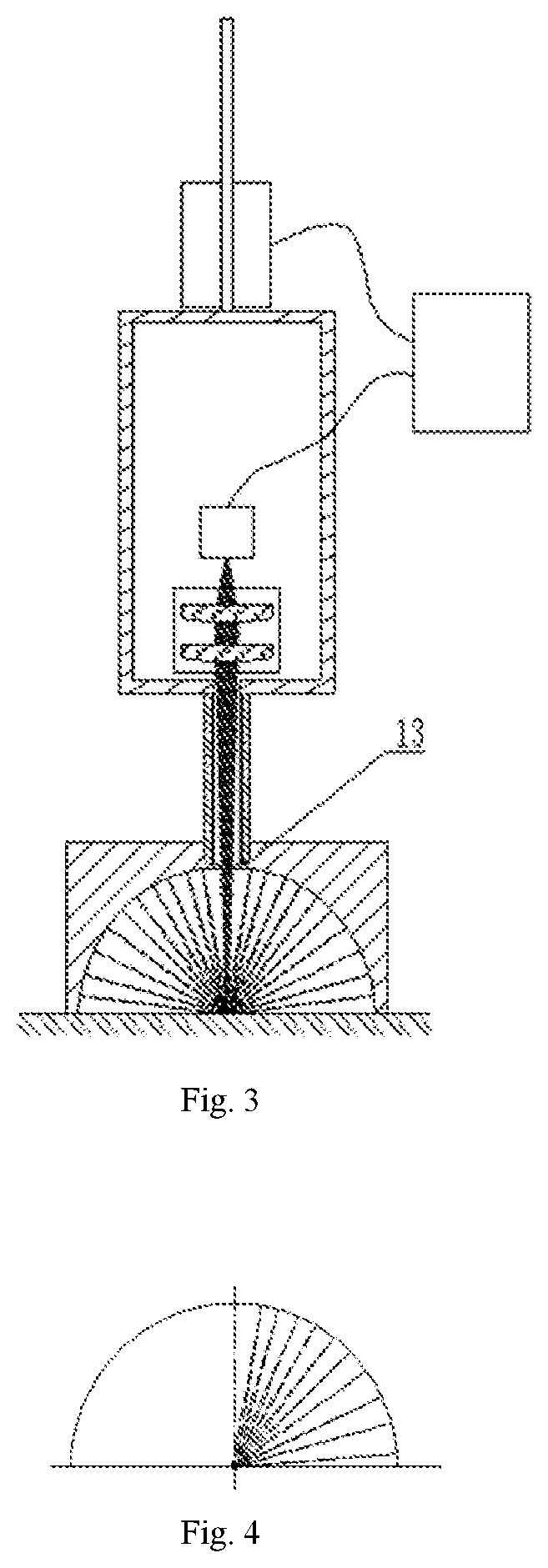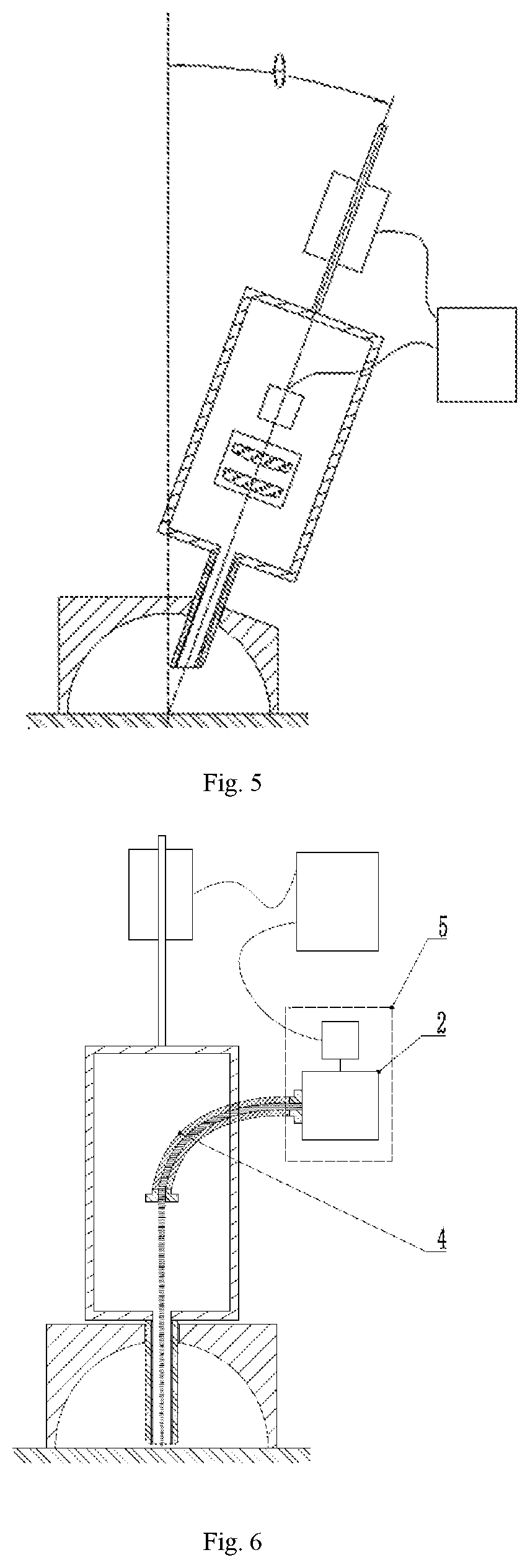Measurement device and measurement method for measuring temperature and emissivity of a measured surface
a measurement device and measurement method technology, applied in the field of measurement, can solve the problems of sharp decline in the effective emissivity, the inability to reach 1, and the inability to measure the surface temperature accurately, and achieve the effect of more accurately measuring the temperature and emissivity of the measured surfa
- Summary
- Abstract
- Description
- Claims
- Application Information
AI Technical Summary
Benefits of technology
Problems solved by technology
Method used
Image
Examples
first embodiment
[0078]FIGS. 1 to 3 show the structure and operational principles of the measurement device according to the first embodiment of the present application.
[0079]As shown in FIGS. 1 to 3, the measurement device of the first embodiment comprises a reflection converter 1, a driving device 3, an optical receiver 5, a data processor 6, and a displayer as a measurement result output device.
[0080]The reflection converter 1 comprises a reflector 1-1, an absorber tube 1-2, and a light guide structure 4. In the present embodiment, the light guide structure 4 is a lens assembly.
[0081]The reflector has a through hole 7, and the reflection surface 10 of the reflector 1-1 is a hemispherical surface. Wherein, the reflection surface 10 of the reflector 1-1 is a hemispherical surface. The bottom surface of the reflector 1-1 is planar, and the bottom circle of the hemispherical surface is located on the bottom surface.
[0082]In the present embodiment, the ratio of the diameter of the through hole 7 of th...
second embodiment
[0102]The second embodiment is a measurement method for measuring the temperature and the emissivity of the measured surface 9 using the measurement device of the first embodiment.
[0103]In the present embodiment, the specific measurement steps of the measurement method are as follows:
[0104]The step of obtaining expressions of radiation brightness at the first measurement position: the reflector 1-1 of the measurement device is positioned on the measured surface 9; the driving mechanism 3 drives the absorber tube 1-2 to move to the first measurement position and hold. The reflector 1-1 of the measurement device is placed on the measured surface 9 to allow that the reflector 1-1 and the measured surface 9 are in contact and maintained, thus, at this time, the reflection action of the reflector 1-1 is disenabled, and part of the radiation energy emitted from the spherical center 11 is absorbed by the inner surface of the absorber tube 1-2, and the other part is projected onto the photo...
third embodiment
[0122]As shown in FIG. 5, the difference between the present embodiment and the first embodiment lies in that the axis of the absorber tube 1-2 forms an angle θ with the diameter perpendicular to the bottom surface of the reflector 1-1, so that during the measurement, after the bottom surface is placed on the measured surface 9, the axis of the absorber tube 1-2 forms an angle θ with the normal of the measured surface 9. The present embodiment may measure the emissivity in the direction of the angle θ. In the present embodiment, the angle θ is 30°.
[0123]For other unspecified parts in the third embodiment, reference may be made to the related content in other respective embodiments.
PUM
| Property | Measurement | Unit |
|---|---|---|
| angle | aaaaa | aaaaa |
| emissivity | aaaaa | aaaaa |
| surface temperature | aaaaa | aaaaa |
Abstract
Description
Claims
Application Information
 Login to View More
Login to View More - R&D
- Intellectual Property
- Life Sciences
- Materials
- Tech Scout
- Unparalleled Data Quality
- Higher Quality Content
- 60% Fewer Hallucinations
Browse by: Latest US Patents, China's latest patents, Technical Efficacy Thesaurus, Application Domain, Technology Topic, Popular Technical Reports.
© 2025 PatSnap. All rights reserved.Legal|Privacy policy|Modern Slavery Act Transparency Statement|Sitemap|About US| Contact US: help@patsnap.com



